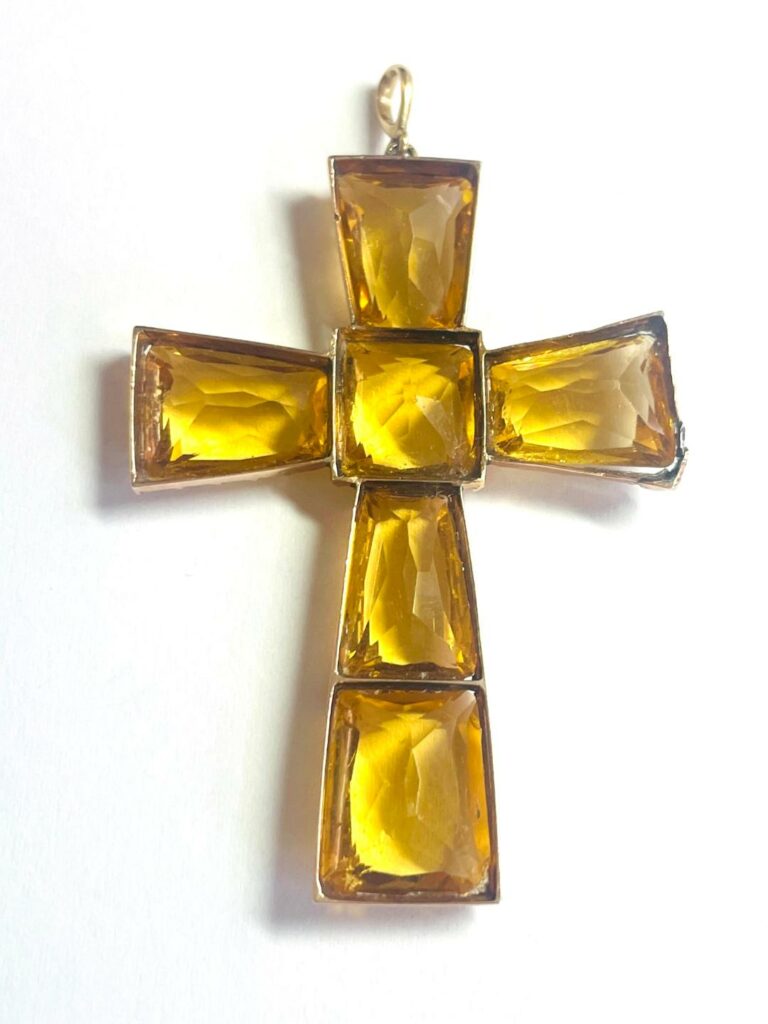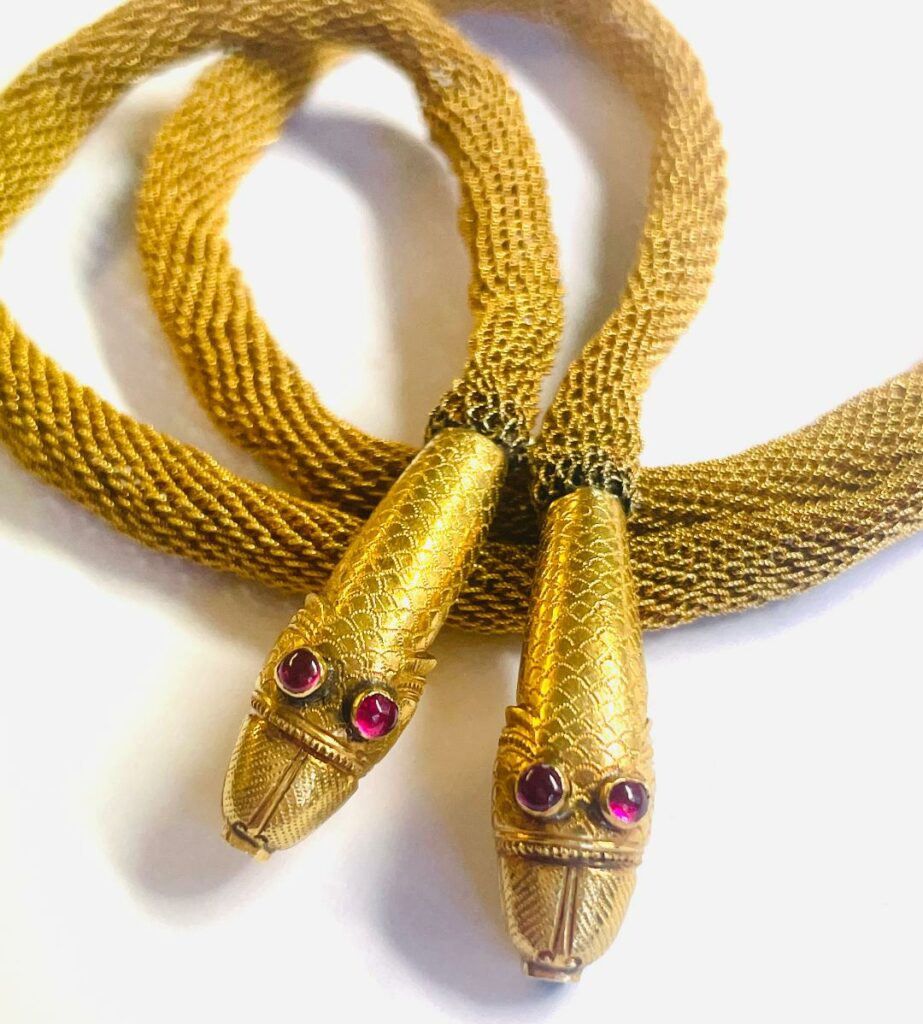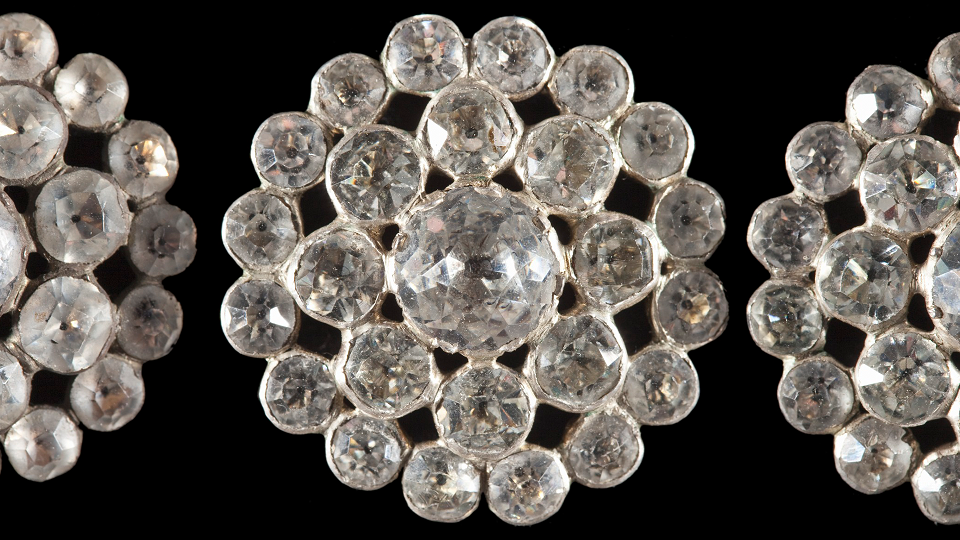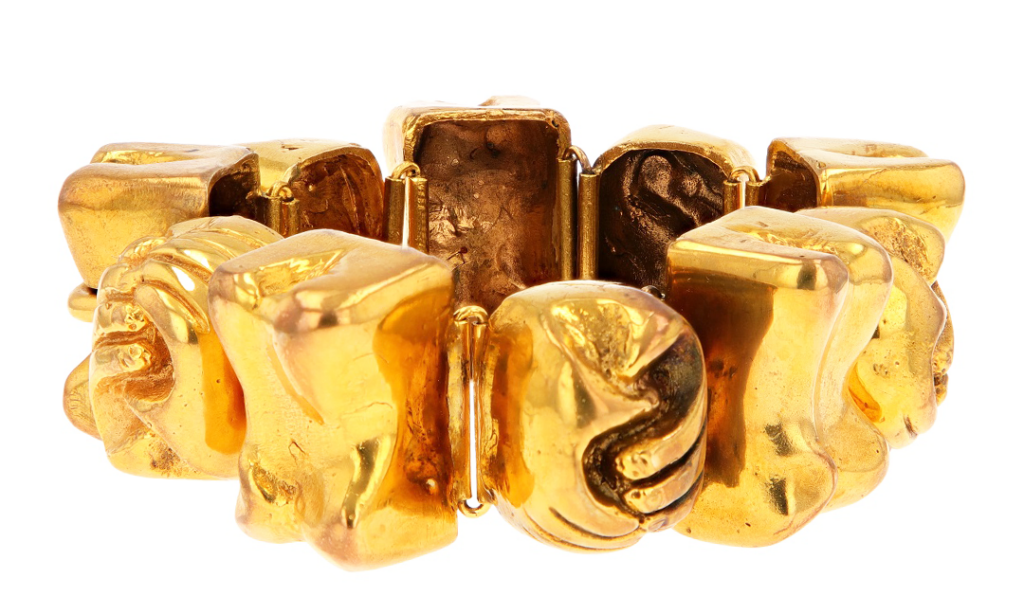Antique and vintage jewelry is filled with richly colored gemstones, diamonds and precious metals adorning the aristocracy and wealthy of bygone eras. However, there was also strong demand for jewelry made from non-precious materials. Less costly materials resulted in less expensive jewelry that was a friendlier price point for those with smaller incomes allowing them to decorate themselves fashionably. The upper classes, however, were also interested in less precious jewelry for traveling purposes. In the 1700’s and 1800’s, when these jewels were being made, travelling in a private coach or stagecoach between a town home and country home could be quite dangerous. Armed highwaymen, sometimes called “gentleman robbers” lurked in the woods, held up travelers and robbed them of their valuables. By wearing jewelry made of less expensive materials any pieces that the thieves made off with would be much less of a loss from a financial point of view, but perhaps more importantly, one didn’t want to lose sentimental jewels or the family heirlooms to bandits. Instead they had copies of their jewelry made using paste, gilt or pinchbeck instead of gold and gemstones.
Paste

Paste refers to a type of lead glass that was commonly used as a substitute for gemstones. Lead glass was used because it was denser and more durable than other glass and it has much better light refraction which gives it more brilliance, sometimes even rivaling that of genuine gemstones. The use of paste started in France around 1742 when jewelry maker George Frederic Stras began hand crafting paste jewelry. Paste glass had to be cut and polished by hand and was actually considered an art form at the time. The jewelry could be just as extravagant as a piece with precious gemstones and metals. It was very popular because it was so beautiful and stylish women often had a set of paste jewelry in their collections. Allegedly, Marie Antoinette, known for opulent style, wore paste, sparking a desire for it among French nobility. Stras’ paste jewelry was so highly desired by the aristocracy that France’s King Louis XV (1710-1774) gave him the title of “King’s Jeweler”. Paste was often made from clear glass and was foiled on the back to add color, or if the paste was a color the foil back was used to make it a richer tone. So how do you tell if a piece is using gems or paste? Paste will chip or will get scratches on the surface and if you’re trying to compare it to a diamond, the diamond will have much stronger brilliance. However, it is best not to guess, instead ask the dealer selling the item for authentication. Paste was popular from the 1700’s until around the 1930s, when “costume jewelry” from Chanel and Schiaparelli launched a new style that took centerstage.
Gilt
Gilt is an ancient method of applying gold leaf or paint to a metal surface, often silver but sometimes bronze. Once the gold leaf is applied it is burnished, which means that it is gently brushed to remove any excess leaf and to make the gold more lustrous. It allows a piece to look like real gold, even though it isn’t. When gold leaf is applied to a metal surface it is called gilding. Evidence of gilding has been found in Turkey dating back around 8,000 years. It was used by the ancient Egyptians, Romans and Greeks eventually making its way into the rest of Europe. While gilding is meant to look like gold, it has a different color than genuine gold and it also wears away over time. Gilding is also used on furniture, pottery, religious objects and in architecture to add an aura of richness and beauty. Electro-gilding was introduced around 1840. It was an easier way to apply gold to a base metal. The piece was placed in a chemical bath. An electrical current is then run through the liquid causing it to adhere to the base metal object.
Pinchbeck

Getting the look of gold at an affordable price was important to jewelry makers as it allowed them to reach a wider audience with their creations. Around 1720, British clock and watchmaker Christopher Pinchbeck developed a form of brass that is a combination of copper and zinc mixed together to look like gold, although it is much lighter weight than gold. There was also allegedly a “secret ingredient” in pinchbeck, known only to the inventor and later his sons, who took their secret to the grave. Pinchbeck was popular in the Georgian and early Victorian eras as an inexpensive “gold” metal that allowed more people to have jewelry and was frequently used in watch cases. Pinchbeck will sometimes have a coppery glow when seen in sunlight and it is known to flake and even tarnish. Real gold will not tarnish. Pinchbeck was sometimes called a “poor man’s gold” and eventually became a slang term meaning “cheap imitation”. Pinchbeck fell out of fashion and pretty much disappeared when the electro-gilding process was invented in 1840 and the use of 9-karat gold was legalized in England in 1854.
While paste, gilt and pinchbeck jewelry were the height of fashion at one time and have mostly disappeared, some of these items have made it through the decades unscathed and are ready to be worn and admired once again.
Top of Page: Paste and silver gilt men’s coat and waistcoat buttons, Germany 1805, courtesy Los Angeles County Museum of Art, public domain.
Authored by Amber Michelle

